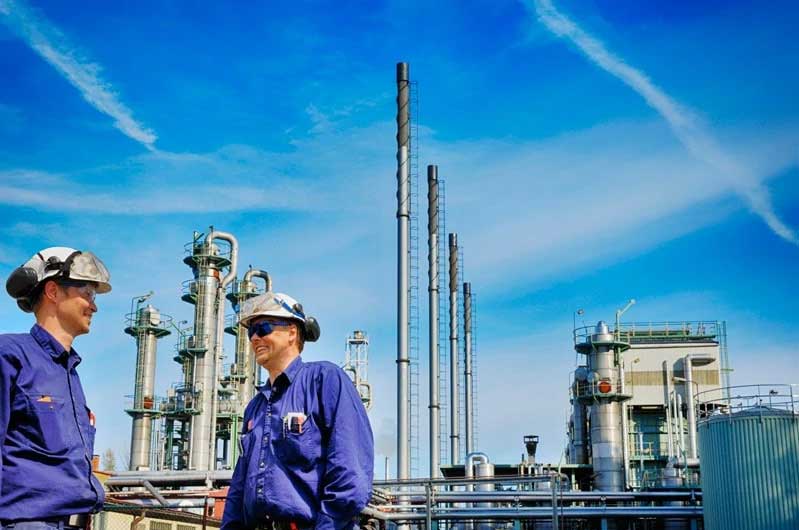Common mistakes that happen during the construction of the INLET of injection quills are
- Improper Material Selection
- Incorrect Dimensions
- Poor Welds or Joining Techniques
- Insufficient Wall Thickness
- Improper Surface Finish
- Incorrect Sizing
Click here for details on Improper Material Selection and Incorrect Dimensions
Click here for details on Improper Surface Finish and Incorrect Sizing
Poor welds or joining techniques
Poor welds or joining techniques is another mistake that can occur in the construction of the inlet of an injection quill. The inlet may need to be welded or joined to the rest of the injection quill, or to other components such as the fluid or gas source.
If the welds or joints are not made properly, the inlet may be prone to leaks, spills, or other environmental releases, as well as impacting the overall performance of the injection quill. For example, if the welds are not strong enough, they may fail under the internal or external loads that the inlet will be subjected to during operation.
It is important to use proper welding or joining techniques to ensure that the inlet is securely attached to the rest of the system, and to ensure that it will be able to perform its intended function safely and effectively. This may include selecting the right type of welding or joining process, using the proper welding parameters, and properly preparing the surfaces to be joined.
By using proper welding or joining techniques, you can help ensure that the inlet will be able to perform its intended function safely and effectively, without posing a risk to people or the environment.
Insufficient Wall Thickness
Insufficient wall thickness is another mistake that can occur in the construction of the inlet of an injection quill. If the inlet has too thin of a wall, it may not be able to withstand the internal and external loads that it will be subjected to during operation, leading to leaks, spills, or other environmental releases.
In addition, an inlet with insufficient wall thickness may not be able to withstand the pressure of the fluid or gas that it will be exposed to, leading to deformations or other performance issues. This can impact the overall performance of the injection quill, and may also pose a risk to people or the environment.
It is important to consider the intended application and operating conditions when determining the wall thickness of the inlet. The wall thickness should be sufficient to ensure that the inlet will be able to perform its intended function safely and effectively, without posing a risk to people or the environment.
By ensuring that the inlet has sufficient wall thickness, you can help ensure that it will be able to perform its intended function safely and effectively, without posing a risk to people or the environment.
Improper Surface Finish
The surface finish of an inlet in an injection quill is an important factor to consider during construction, as it can have a significant effect on the performance of the quill. If the surface finish is not properly done, it can lead to a variety of issues, including:
- Reduced flow rate: If the surface finish is not smooth, it can create friction and turbulence, which can reduce the flow rate of the injected fluid.
- Corrosion: A rough or improper surface finish can lead to the accumulation of contaminants or deposits on the surface, which can cause corrosion and reduce the life of the injection quill.
- Leakage: A poor surface finish can create gaps or spaces between the inlet and the rest of the quill, which can result in leakage of the injected fluid.
- Inadequate mixing: The surface finish of the inlet can impact the mixing of the injected fluid with the process stream. A rough surface can cause uneven mixing and result in inadequate dispersion of the injected fluid.
- Increased pressure drop: A rough surface finish can cause increased pressure drop across the quill, which can result in decreased efficiency and performance.
Overall, the impact of an improper surface finish on the inlet of an injection quill can lead to reduced performance, increased maintenance costs, and potential safety issues. Therefore, it is essential to ensure that the surface finish is done correctly during construction to ensure optimal performance and longevity of the injection quill.

Contact us
Crystal Industrial Syndicate
Phone : +91-22-27563850
Fax: +91-22-67939439
www.crystalindustrial.in
sales@crystalindustrial.in
Crystal Industrial Syndicate from India, manufactures a variety of custom injection quills for a range of industrial processes. Our world-class chemical injection quills are manufactured in India comply with the world’s most stringent certifications. We have clients around the world, from Europe and North America to Africa and the Middle East. Please contact us for details about how we can meet your injection quills requirements. Contact us
Copyright © 2023 by Crystal Industrial Syndicate Pvt Ltd. All rights reserved. www.crystalindustrial.in
